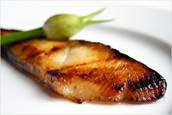When Max Wolfe, owner of Massimo Ristorante in Walnut Creek, CA wanted a glassware update he called on Christine Workman, Account Manager from Libbey Foodservice.
Chris immediately asked questions to qualify what requirements Max had for his glassware.
- Should it be stackable?
- How will it be washed?
- Volume of the operations?
Some of the reasons that operators still trust Libbey first for their glassware needs are their special glass treatments and their lifetime guarantees. Read on for more about those from Libbey Glassware.
 |
| If the rim or foot of any one-piece stemware item chips, Libbey guarantees to replace or refund the price of the glass when its returned to the dealer/distributor from it was originally purchased. |
Libbey's Sheer-Rim/D.T.E. (Dura Temp Edge) stemware and tumblers feature a beadless edge that is first cracked-off then polished to produce a fine, yet durable edge. This creates a combination of elegance and affordability in glassware for operators looking to upgrade their beverage service, while stil maintaining longer service life. Sheer-Rim/D.T.E. Tumblers and Stemware are guaranteed against chippage of the rim.
Libbey’s exclusive DuraTuff® treatment is a special thermal after-process for “pressed” tumblers and stemware that produces durable glassware with prolonged service life for the foodservice industry. Look for the DuraTuff® name embossed on all Libbey DuraTuff® tumbler and stemware products, such as élan®, Endeavor®, Quadra V, Gibraltar®, Everest, PaneledTumblers, Inverness, Dakota, Restaurant Basics, Casual Coolers and Winchester.
Libbey’s heat-treated tumblers and stemware are created through a special heating and rapid cooling process after the glass is formed. This secondary process on “blown” glassware is performed only on the upper portion of the glass where most abuse occurs. Libbey’s heat-treated glassware offers increased resistance to thermal and mechanical shock.
For more information about glassware or to be put in touch with Chris please contact Brian Isaeff, Territory Manager, US Foods San Francisco @ 925-588-3279











